Tested motorcycles:
BMW R 1200 R (with the new Continental-Tewes ABS)
BMW K 1200 S (FTE ABS)
KTM990 ABS (Bosch-Brembo ABS)
BMW F 800 S (Bosch ABS)
Honda CBF 1000 (Nissin-Honda ABS)
Honda Varadero 1000 (Nissin-Honda ABS)
Ducati ST3 a (Bosch-Brembo ABS)
Triumph Sprint ST (Nissin ABS)
Suzuki V- Strom 650 (Nissin ABS, similar to a Bosch system)
Kawasaki ZZR 1400 (Nissin ABS, similar to a Bosch system)
Yamaha FJR 1300 A (Nissin ABS, similar to an early Bosch system)
Stopping performance is measured from 100 - 0 kph, as an average of three runs.
Dry Stretch - equals a normal road
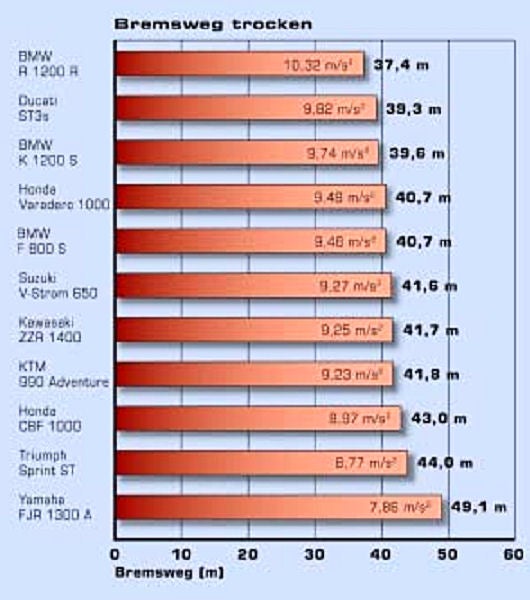
11,7 meter - these are worlds in between the BMW R 1200 R and the Yamaha FJR. Here we have to say that even the FJR in actual practice still functions safer and realizes shorter braking distances than the average rider.
Bad Stretch - includes bumps, edges and potholes of randomly different dimensions
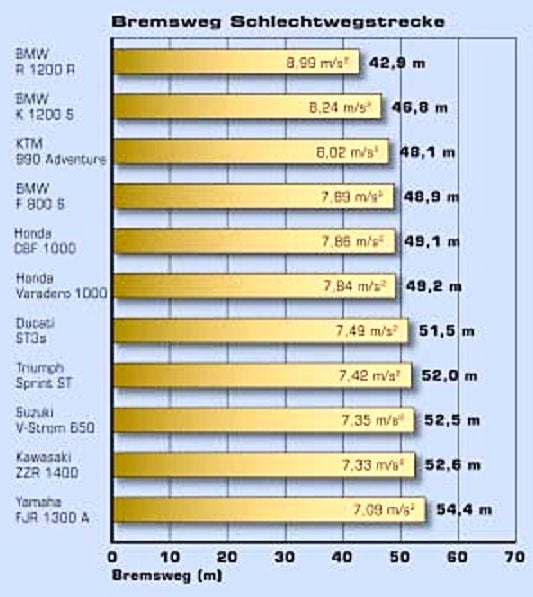
Again the R 1200 R leading an the FJR trailing. But in between them the test field is changing positions. Here the KTM benefits from its longer suspension travel, which filter peak impacts out before it reaches the ABS sensors. The oposite is demonstrated by the Kawasaki. It develops too much slip at the front wheel. The BMW R ABS regulates well with only minor impact on braking performance. 42.6 m means earlier stand still than others on the smooth stretch.
Wet Stretch - evenly water treated with the help of a sprinkler system
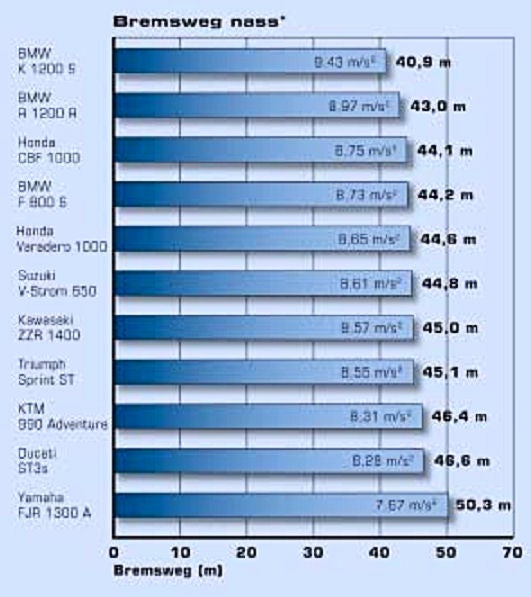
With 9,43 m/s the BMW K 1200 S reaches phenomenal braking power in the wet. A contribution of the long wheel base, which keeps the front stabil. The DL650 demonstrates the importance using the rear brake even with ABS. The brake distance was 10 m longer without the rear brake.
'Friction Jump' - a stretch of alternating wet and dry segments, each 20 cm wide
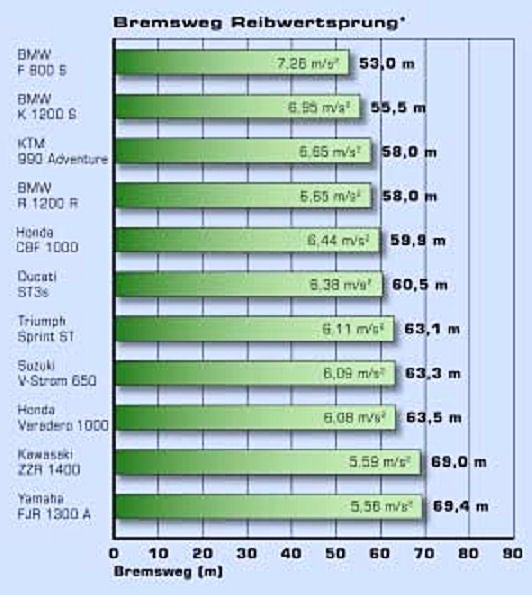
This is the acid test for the ABS's regulating quality. Brake distance of more than 50 m delivered even by the top performers do speak a clear language. The BMW F 800 S ABS regulates harshly but effective. The Kawasaki ABS is careful and therefore too defensive.
CONCLUSION
Never again without! The is the short version and actually all we needed to say, after our experiences with 11 ABS motorcycles. And here is why: What even a very skilled rider can do only occasionally under best conditions, and sometimes only with a lot of luck, that is what the newer ABS systems can do any time - safe braking in the shortest possible distance! The art is to master the effectiveness of the regulating logic in conjunction with the comfortable and clear operation for the rider. It is BMW who gets both under one roof with their new ABS generation. Honda is second with only average braking results, but these systems are top in terms of regulation sensitivity.

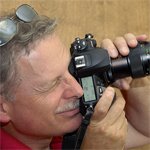

No comments:
Post a Comment